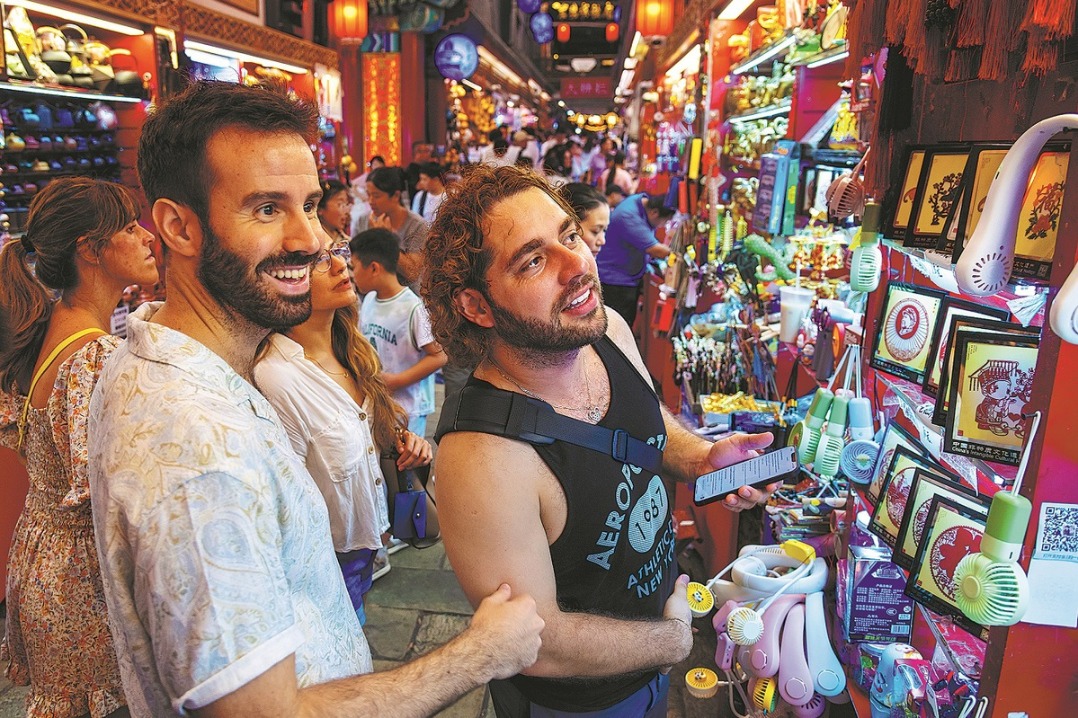What's on

Treasure cabinet

Cangbaoge, or "cabinet of treasures", was a piece of wooden furniture or a well-decorated room for collectors to store and exhibit their cultural assets in ancient China. The National Art Museum of China has adopted this term to name an exhibition hall on its sixth floor and has turned it into a permanent display room for its collection. Artworks on show are usually paintings and sculptures of comparatively small sizes. Recently, the museum renewed the display, including Ducks in Spring River, a landscape painting by Ren Bonian (1840-95), a co-founder of the Shanghai painting school, and Peaches, by Wu Changshuo, another prominent art figure in modern Chinese history. Also on show is Goddess of Cloud, in which Fu Baoshi (1904-65) visualized the world of deities as described in Jiuge, a collection of 11 poems attributed to Qu Yuan, the poet and politician who lived through the third and fourth centuries BC. The exhibition runs until Feb 20.
9 am-5 pm, closed on Mondays. 1 Wusi Dajie, Dongcheng district, Beijing. 010-6400-6326.
Sound of history

The earliest sound of music was heard some 6,000 years back along the Li River, in Hunan province, which is considered a birthplace of Chinese civilization. When people took a rest from working in the fields, they used farming tools to create sounds, and sang and danced to the beats. Musical instruments of different material were later invented to bring people great joy during group activities, such as hunting, playing games and dancing. Stone bells and pottery drums from the period are part of the display at Hearing and Seeing Huxiang, an exhibition running until Oct 30, at Hunan Museum, in the provincial capital Changsha. The exhibition navigates through the history of music in Hunan to offer a glimpse of the development of human society in which music served as not only a tool of entertainment but was also an essential part of rituals on important occasions, helping people connect with the universe and establish an early form of social hierarchy. Also on show are bronze nao, a percussion instrument in the shape of bells of various sizes that date back to around the 11th century BC. They were grouped to perform compositions at ceremonies. There are also pottery figures depicting musicians playing various kinds of instruments as a band. Such objects show the evolution of music and social norms, as well as cultural exchanges between ancient China and the world through the Silk Road.
9 am-5 pm, closed on Mondays. Dongfeng Road, Changsha, Hunan province. 0731-8441-5833.
Nurturing flow

Rivers and the lives depending on it have been recurring motifs in the artworks of Wang Huangsheng who grew up in a riverside city in South China's Guangdong province. As a child, he was encouraged by his father to draw people who lived along the river and the creatures in the water. Wang learned to appreciate the vibrancy of nature and ancient people's takes on life in the classic mountain-and-water paintings. Wang's solo exhibition at He Xiangning Art Museum in Shenzhen, titled Remoteness and River, revolves around his intimate experiences with rivers and how they form an imagery bridge between the past and present in his work. He depicts the body of water as a physical being and shows the variety of social systems booming along a river. Also, he has turned river into a metaphor of the progress of history and life to express a humanistic concern. The exhibition runs until Nov 26.
9:30 am-5 pm, closed on Mondays.9013 Shennan Avenue, Nanshan district, Shenzhen, Guangdong province. 0755-2660-4540.
China Daily
Today's Top News
- China's industrial profits down 1.8% in H1
- Thailand responds to Trump's ceasefire call
- Recall vote shows DPP's manipulation runs against Taiwan people's will: mainland spokesperson
- Top DPRK leader visits China-DPRK Friendship Tower
- China proposes global cooperation body on AI
- Scholars propose inclusive human rights framework






























